Bar-Boljare motorway © Architectuul
“Neither a borrower nor a lender be,” advised the somewhat facile Polonius, the Danish king’s advisor, to his departing son, Laertes, in Shakespeare’s play, Hamlet, “for loan oft loses both itself and friend, and borrowing dulls the edge of husbandry.” It’s sound advice for anyone but perhaps the government of Montenegro should have heeded it before work began on the A-1 Bar to Boljare motorway. The first section, which is being constructed by the China Road and Bridge Corporation (CRBC), has been financed largely with a $944-million (€775-million) loan from China’s Exim (Import and Export) bank. The first annual payment of $67.5-million (€55.4-million) falls due this July. But the economy of Montenegro is suffering badly from the effects of the COVID-19 pandemic, which has led to a steep fall in the income from tourism.
In 2020, tourism plunged from 22% of GDP to just 3.5%, which has triggered a sharp recession. The economy shrank by 15.2%, which has exacerbated the country’s current account deficit, depressed retail services, caused a rise in unemployment and a serious dip in investment and public finances. The Podgorica government must be careful because China has form when it comes to lending to finance projects. The EU made mistakes over its help to Greece which led to China taking over the port of Piraeus. If Montenegro fails to meet its payment deadlines it risks losing sections of its own coastline to Beijing because the terms of the loan contract pledge Montenegrin land as collateral.
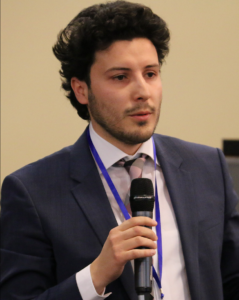
Montenegro has asked the EU to help it to repay its billion-dollar loan for the as yet unfinished first phase of the Bar-Boljare highway. Brussels has declined a similar approach in the past, but Deputy Prime Minister Dritan Abazović tried again in March to persuade the EU to take over the loan, arguing that it would help to curb Chinese influence on the bloc’s doorstep.
The EU expressed sympathy but fell short of offering help. EU Commission spokesperson Peter Stano told one of the Commission’s daily media briefings that it would not help Montenegro to repay its debts. The highway project was approved by Montenegro’s previous government; opposition parties and civic activists had said all along that it was overpriced, and they alleged corruption in the process.
Now they’re stuck with it. Montenegro’s Minister of Finance and Social Care, Milojko Spajić told the media that the highway has cost €20-million per kilometre to construct, which makes it one of the world’s most expensive roads.
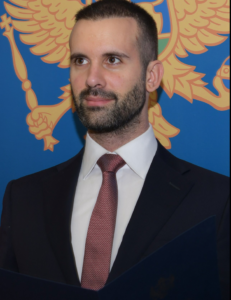
China has pointed out that the loan for the highway represents less than a quarter of Montenegro’s total debts, while the Exim bank is only charging 2% interest, which is quite low, with repayment over 20 years and a 6-year grace period.
However, all may not be lost for Montenegro’s hopes of assistance. EU Enlargement Commissioner Oliver Varhelyi posted a Tweet in March in which he wrote: “We stand by Montenegro and support its EU path. We’re exploring options with VladaCG (the Montenegrin government) and our partners to find workable solutions for [the] country’s investment projects and to ensure sustainability of its public debt and eliminate risks of past arrangements, respecting EU policy and financial rules.”
Montenegro’s Chinese loan was taken out at a time when China was extending loans in pursuit of its One Belt, One Road (OBOR) initiative, according to BNE Intellinews, quoting the Center for Global Development, a think-tank based in Washington D.C., which listed Montenegro as one of eight countries at increasing risk of debt problems.
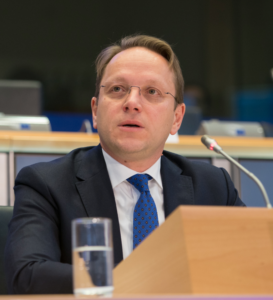
The deadline for completing the first section has had to be extended twice, while costs have grown. Montenegro’s ability to pay has not, however.
It has a budget deficit of 11% of GDP while budget revenue has fallen by 13.1% year-on-year. The country’s total expenditure grew by 4.8%, despite the government’s attempts to reallocate spending into healthcare services and supplies while reducing capital spending.
The country’s debts reached 100% of GDP by the end of 2020. That may not be as bad as it might appear. Thanks to accumulated government deposits, maturing debt may be paid earlier, so that by March 2021 Montenegro was able to reimburse maturing Eurobonds worth 5% of GDP, while undertaking to repay additional debts of 2% and 6% of GDP later in 2021 and 2022.
During that period, though, inflation is set to rise, and because many of its jobs rely on the tourist trade, any growth in employment is likely to be modest. Currently, 15.2% of the population are without a job.
GOING INTO DEBT, A KILOMETRE AT A TIME
Some 85% of a priority section of the highway has been completed. Two deadlines for completion have passed and the new deadline has been set for the end of September 2021, although Montenegro’s Minister of Transport and Maritime Affairs, Osman Nurković, refused to confirm that the new deadline would be met. The original deadline was May 2020 and the cost of the construction, including additional work that was required, has been estimated at €895-million. Montenegro, of course, is only responsible for the section of the road that runs through its territory.

The road starts in Belgrade, for instance, which is the capital of Serbia, while at the other end stands Bar, the main seaport for Montenegro. Both Montenegro and Serbia would like the road to be listed as one of the ‘Pan-European Corridors’.
On the Serbian end, work began in 2012 on the 40-kilometre stretch from Ljig to Preljina. The road went into service in 2016, just a year after work began on the Montenegro section.

In Serbia, the road has two sections: Belgrade to Požega and Požega to Boljare, the site of the border crossing between Serbia and Montenegro. Because the land contains fewer obstacles to construction, the Serbian section was the easiest to build and also the cheapest, comparatively speaking. It’s a different story in Montenegro, which is a mountainous country. The road requires sixteen tunnels and twenty bridges, which are expensive. In August 2019 the Ministry of Transport and Maritime Affairs reported that it had secured financing of €388-million for the tunnels and the highest bridge, the Moračica on the Smokovac – Uvač – Mateševo section cost €74.5-million..
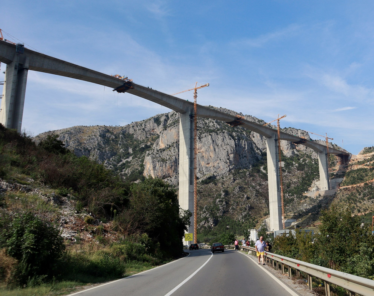
Of the 1,100 workers employed in its construction, almost 400 were Chinese citizens. It is a formidable achievement, 960 metres long, and 23.4 metres wide, supported on five pillars, with the tallest of them 161 metres high. The bridge forms part of the section from Podgorica, the capital of Montenegro, to Kolašin.
“Construction works were mostly completed on all facilities (bridges, tunnels, open route),” Jovan Ivanović, deputy leader of the team of engineers (supervision) from the French-Italian Consortium INGEROP-GEODATA, told Media Bureau, “especially on the first half of the route. Works on equipping the so-called highway are also being carried out intensively: electro-mechanical works. The equipment and devices in the tunnels are mostly mounted. These are low and high current installations, hydraulic and fire installations, ventilation, lighting, horizontal and vertical traffic signals and more. The project of water supply of the highway is in the final phase, as well as the project of power supply with electricity.” Ivanović said he did not expect any further delays, although he admitted that there is still a lot of work to do.
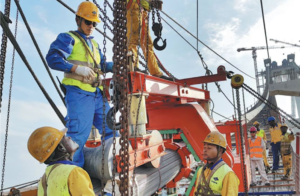
The Chinese contractors have recently found themselves facing an unexpected problem. Under intense public pressure, the China Road and Bridge Corporation (CRBC) had to ask for permission to repair a damaged 500-meter section of the Tara River’s bank. The Tara, much loved by tourists back in the days when travel was possible, is one of the continent’s most beautiful rivers. It is UNESCO-listed which is supposed to give it protection. This is how Trip Advisor describes it: “It is the deepest canyon in Europe, and second deepest in the world after the Grand Canyon of Colorado, USA. 78 kilometres long, and up to 1,300 metres deep, this “tear of Europe”, as it is also called, is a great natural and tourist attraction not only in the area, but in the entire country.” Sadly, with very few tourists these days, it is being spoiled before they can return. The work for which the request for ‘permission to repair’ is concerned included stabilizing the left bank of the waterway under the alpine Mateševo bridge, near a hub for mountain tourism in the area called Kolašin.
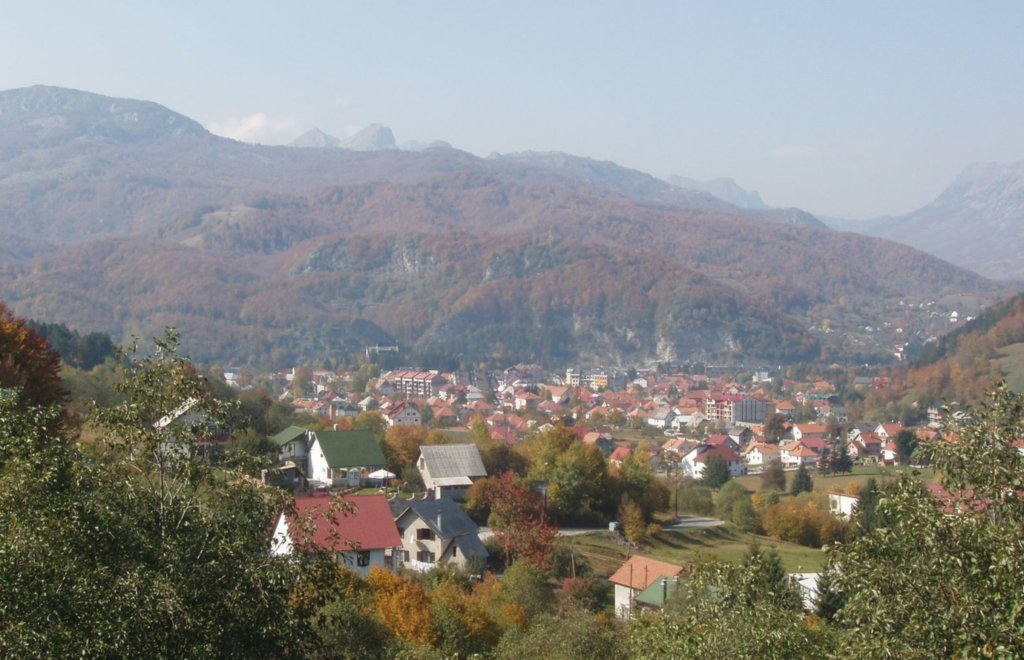
The riverbank was damaged by the construction of the road. Balkan Insight reports that Montenegro’s Agency for Nature and Environmental Protection had rejected a first application to carry out remedial work because contractors had deviated from the agreed plan. “Construction activities led to the turbidity of a river of national importance while the deepening of the 500-metre-long riverbed affected Tara’s biodiversity,” the Agency reported. The later request for permission to put right the damage said: “Remedial work is necessary after damage that occurred during the execution of works on the Mateševo loop. The stabilization of the left bank of the Tara, under the old Mateševo bridge, to a length of 500 meters, should be completed by October.”
HERITAGE WASHED AWAY
The proposed repairs do not go anywhere near far enough, according to environmental lobbyists. “Rehabilitation of 500 meters of the riverbed looks like a bad joke,” Natasa Kovacevic of the Green Home environmental NGO, told Radio Free Europe/Radio Liberty’s Balkan Service, “since 6.7 kilometres of river flow and the floodplain’s key biodiversity zone were destroyed on the loop and upstream access roads alone.” This is an issue that will not simply go away. On March 3, the Prosecution Service in Montenegro launched the first state investigation into environmental damage done to the river, claiming the company had begun work on a part of the river bank without getting the required environmental permits.
“Contrary to law, the company started construction of a facility without submitting an application and set environmental protection measures,” said Prosecutors in Kolašin in a press release. “This has caused damage to the environment to a greater extent and in the wider area.”

The Tara’s 80-kilometer canyon is the longest in Europe, and it, together with the surrounding coniferous woods, have enjoyed UNESCO World Heritage status since 1980. Environmentalists point out that it has been under threat from small hydro-electric power projects and micro-dams, largely because throughout much of the Balkans, enforcement regimes are weak and often slipshod. Montenegro’s Nature and Environmental Protection Agency (NEPA) last year accused the Chinese builders of ignoring its recommendations. Photographs of the area show a struggling waterway that now more closely resembles an inner-city clearance site, with discarded and rusting old equipment and broken metal fences littering the scene. The environmentalist organization Green Home stressed that the Tara is protected on six levels and highlighted its significance as a natural habitat. “The arrogant breach of rules on the Tara,” said a spokesperson, “has crossed the line and the river is dying. Everyone who contributed to the situation as it is must be held responsible, which is why we ask for the works to be halted until the responsibility of the perpetrator and the damage are determined.” It described the damage as “unprecedented ecoside”. The Tara’s once-pristine turquoise waters are now brown and sludgy. The website ‘Modern Diplomacy’ lists the Tara River problem as one of several environmental issues brought to light by the fulfilment of the Belt and Road plan. “The most visible consequence of the project is the need for rock excavation for a motorway tunnel,” it says, “but other implications, such as water pollution and illegal landfills also emerged from an investigation by the Montenegrin NGO, MANS.
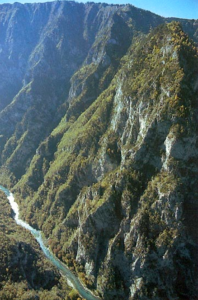
The European Parliament and European Commission have called on authorities to share more details about the project’s environmental impact with the public.” Any construction work is bound to have its downside but in this case it’s a very big downside for what has long been a spectacular natural national asset. The simple fact remains: drive a massive autoroute through a known beauty spot and you are inevitably going to spoil it.
Dejan Milovac, from MANS, said the prosecution’s investigation was surprising since the authorities had ignored environmental warnings from civic activists and environmentalists.
Balkan Insight reports that in June 2016, “when MANS urged the Ministry of Sustainable Development and Tourism to protect the Tara, the ministry insisted no significant damage had occurred.” Milovac told the Balkan Investigative Reporting Network: “The prosecutor investigation refers to only a small part of the devastation that has happened at the construction site near Mateševo. The black spots on that route still remain without adequate attention from the authorities, while the contractor has been released from any responsibility for now.” The cost of restitution is only part of the story in a country where low-level corruption is more or less the norm whenever large amounts of money are involved.
Jacob Mardell is a researcher of China’s Belt and Road Initiative and contributes to the Mercator Institute for China Studies’ (MERICS) BRI Tracker project. In an article for the Berlin Policy Journal he wrote: “There is no hard evidence of corruption in this project, but everyone here admits that corruption is endemic throughout the Western Balkans. Kickbacks vary, but in Montenegro I’m told that 10 percent of contract value is not an outrageous sum to request as a bribe. Even many CRBC employees, who speak only on the condition of anonymity, assume high-level corruption exists in the project.”
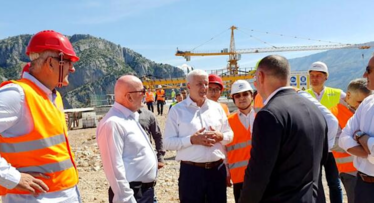
STUCK ON THE TREADMILL
Scrapping the project is not an option, of course, so completing the next section from Mateševo to Boljari on the Serbian border becomes essential. In a way, it’s rather like a wire-walking artist attempting to cross the Niagara Falls. Getting nervous half way across doesn’t help: turning around would not reduce the danger. As Shakespeare’s anti-hero Macbeth muses when his blood-soaked bid for power starts to unravel, “I am in blood stepped in so far, that, should I wade no more, returning were as tedious as go o’er.” Much the same is true of massive debts being incurred for such a vast project. While the debt is mounting and the delays and obstacles to completion drag on, together with environmental concerns, many in Montenegro and elsewhere question the need for such a road at all. Right back at the planning stage in 2009 the New Jersey-based engineering consultants, Louis Berger, expressed doubts about the value of the project. That conclusion was echoed in 2012 when San Francisco-based URS, the engineering, design and construction company, expressed a doubt that the road would ever carry sufficient traffic to make its construction worthwhile. A feasibility study by a domestic company in Montenegro agreed with that view but still declared it to be ‘economically justified’. A certain amount of national pride is involved, of course, plus an understandable desire not to be seen by the public as culpable idiots. No doubt the road will carry traffic; the road is not, as some early critics claimed, the ‘road to nowhere’. Or at least it won’t be when it’s finished.
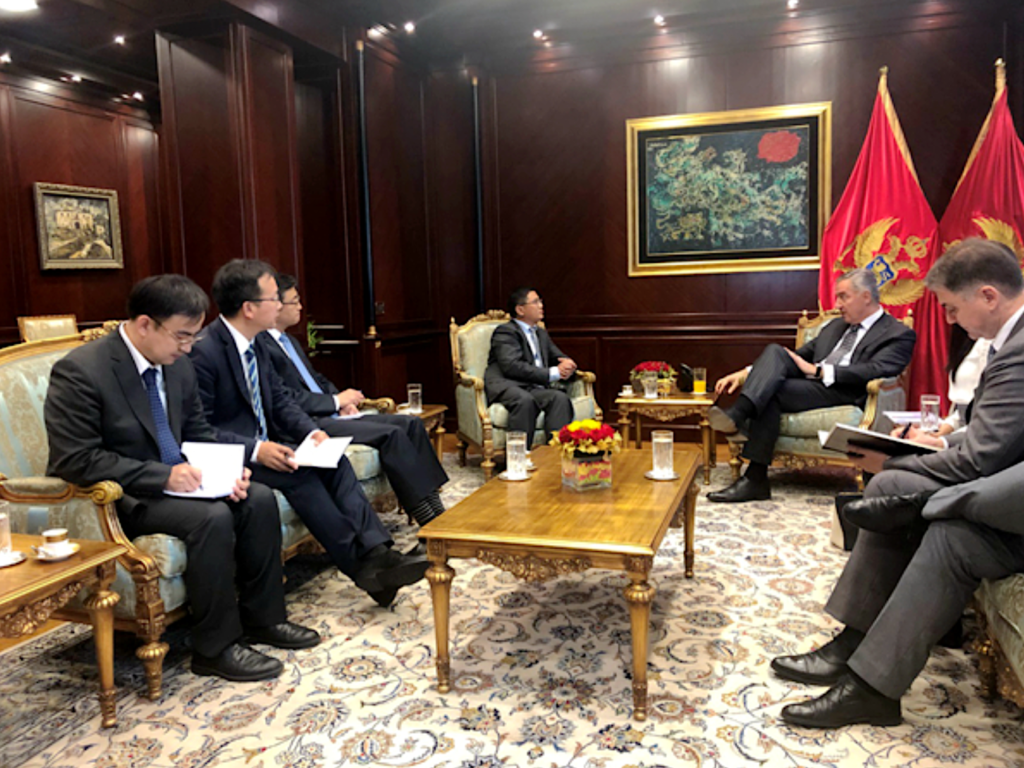
According to the website of US-China today, Montenegro started the process of planning the Bar-Boljare highway in 2006. It was eagerly championed by Milo Đukanović, Montenegro’s dominant political figure since the 1990s and today the president. The highway was promoted as a way to boost the economy and improve trade with Serbia. It connects the rest of the country to the north, which, being very mountainous, is relatively underdeveloped (although very beautiful and full of wildlife, such as brown bears, Balkan lynxes and the golden jackal). In theory, this rich natural habitat could strengthen the economy and develop the region by bringing more tourists and improving the necessary infrastructure, as well as providing a faster route to Serbia, thus facilitating trade between the two countries. It could even be seen as a step forward on the path to becoming a part of the European Union, for which it is already a candidate.
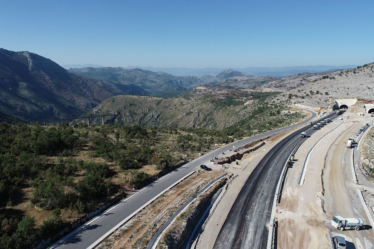
However, the Balkan Crossroads website mentions that “The International Monetary Fund advises the country to postpone the completion of the motorway construction until the country enters the European Union (EU) (and) gets access to EU structural and investment funds. However, the earliest term of Montenegro’s accession to the EU is estimated at 2025 and most likely even later, given the challenges that the Union is currently facing, but also considering the reforms that Montenegro still has to implement within its institutions.”
BUYING WORLD DOMINATION
With a population of only some 622,000, Montenegro could not find a Western investor willing to back the project. US-China Today reports what happened. “Jacob Mardell, an analyst at Mercator Institute for Chinese Studies in Germany, says that Montenegro turned to China because, ‘they want the job done, and China is the only one willing to fund it’.

Montenegro did not have any European backers due to feasibility studies that highlighted its high cost and low return on investment. However, with China, Mardell says, ‘the EXIM Bank isn’t going to ask too many questions because it’s judged that Montenegro can pay this loan back and this money is going to a Chinese company … it’s not in their interest to say this is a stupid project’.” Some present-day analysts will nevertheless tell you that it is. It’s worth noting, though, that the existing road from Bar to the Montenegrin capital carries only some 6,000 vehicles a day, not nearly enough to justify the cost nor to provide sufficient income from tolls to repay the loan instalments.
Among civil engineers, the project arouses some admiration, albeit tinged with doubt about its justification in economic terms. This is the assessment from Geodata, the giant Italian geoengineering company: “The highway from Bar to Boljare is 169.2 kilometres-long. The section Smokovac-Mateševo, is 40.8 kilometres long, with 20 kilometres of tunnels and 4.5 kilometres of bridges and is the most difficult due to the tunnels, bridges and viaducts that will make up almost 60% of its total length. This highway is the greatest engineering construction project in Montenegro and one of the biggest projects being implemented in the European market.” The website goes on to explain that the section will require the construction of 19 double-pipe tunnels and 36 bridges and viaducts. The daily average of traffic on the existing road from Bar to the border with Serbia, in certain sections ranges from 5,100 to 8,300 vehicles with distinct seasonal annual intensity that reaches up to 20,000 vehicles when the tourists are around.” Impressive, isn’t it? However, the roads from other ports to their countries’ capitals tend to be rather busier. The A26 from Calais to Paris, for instance, was used by almost 25,000 cars and well over 4,000 trucks every day in 2017, a total of more than 29,000 vehicles.
The number of likely users for the new road, if it’s ever completed, is of no interest to China, which is trying to expand its influence and gain footholds within Europe. The Washington Post has expressed concern: “Montenegro’s first debt payments are due this summer. The $1-billion (€0.82-billion) loan is nearly a fifth the size of the country’s entire economy. Montenegrin leaders say they won’t miss their loan payment this summer even if no E.U. aid is forthcoming. But European advocates of a bailout say that their neighbor is at risk of being financially captured by China at the same time democratic nations are talking in increasingly urgent terms about Chinese influence around the world, including the U.S. intelligence community in a report released this month.” That report from the Office of the Director of National Intelligence, published in April 2021, gives a stark warning about Beijing’s ambitions: “China seeks to use coordinated, whole-of-government tools to demonstrate its growing strength and compel regional neighbors to acquiesce to Beijing’s preferences, including its claims over disputed territory and assertions of sovereignty over Taiwan.”
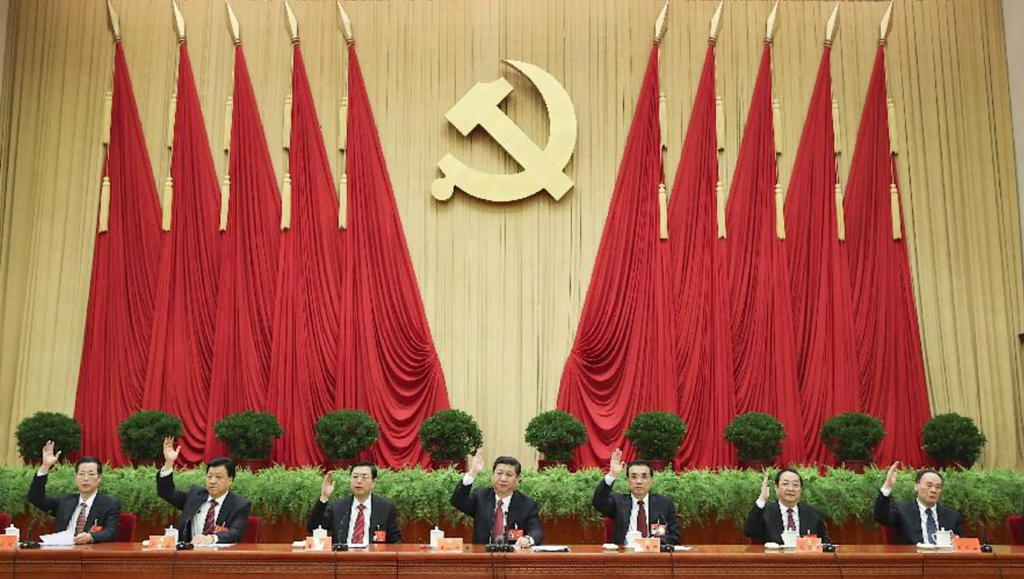
But the report also says that China is using other means to gain influence that some poorer countries in Europe are finding hard to resist. Remember the children’s stories in which someone is tempted by what turned to be fairy gold? “Beijing will continue to promote the Belt and Road Initiative (BRI),” the report says, “to expand China’s economic, political, and military presence abroad, while trying to reduce waste and exploitative practices, which have led to international criticism.” That, of course, is exactly what has been happening in Montenegro. Furthermore, the report points out that China has extremely effective cyber-espionage and cyber-attack capabilities which it can deploy on a global basis. “China leads the world in applying surveillance systems and censorship to monitor its population and repress dissent,” says the report, “particularly among ethnic minorities, such as the Uyghurs. Beijing conducts cyber intrusions that affect US and non-US citizens beyond its borders—such as hacking journalists, stealing personal information, or attacking tools that allow free speech online—as part of its efforts to surveil perceived threats to CCP power and tailor influence efforts. Beijing is also using its assistance to global efforts to combat COVID-19 to export its surveillance tools and technologies.” It has very modern armed forces, too, of course, but if it can take over the world without firing a shot, that could be easier, even if it takes a little longer.
In Montenegro and in the increasingly troubled EU, concern continues over the massive loan and the unfinished road. “To repay the loan,” says the World Highways website, “there has been concern by financial analysts and western politicians that China, by way of its state-run lender Export-Import Bank of China, will seek to control a country’s strategic natural resources as payment for defaulting on contracts.”

There would seem to be mineral resources that China – or any country – would like to lay hands on, too, like the Brskovo mine in Montenegro, which has the potential to be one of the largest and lowest cost open cast mines for zinc, lead, copper, and silver in Europe. A default by Montenegro on a loan repayment, then, could prove very expensive indeed.
LET’S ALL LEARN MANDARIN
Every four years, the Office of National Intelligence publishes a paper called Global Trends, predicting the challenges and risk of the next twenty years. It’s intended to help the newly elected President and his team to plan ahead and to try and ensure the United States is prepared for whatever the world may throw at it. In its latest edition, released in March 2021, it says: “The rivalry between the United States and China is likely to set the broad parameters for the geopolitical environment during the coming decades, forcing starker choices on other actors. States will leverage these diverse sources of power to jockey over global norms, rules, and institutions, with regional powers and nonstate actors exerting more influence within individual regions and leading on issues left unattended by the major powers. The increased competition over international rules and norms, together with untested technological military advancements, is likely to undermine global multilateralism, broaden the mismatch between transnational challenges and institutional arrangements to tackle them, and increase the risk of conflict.”
That is a terrifying prospect, but Global Trends says its predictions are “not set in stone”, so hope remains. “During this period, China experienced many of the same environmental and societal problems but was better able to adapt because of stronger social cohesion and trust; agile direction from centralized authority; a proven ability to deliver jobs, goods, and services; and a political system that repressed competing voices. Although to a lesser degree than the growth in the boom years of the 1990s and 2000s, domestic demand generated gross domestic product (GDP) growth sufficient to allow China to surpass the United States to become the world’s largest economy by 2030.” I have spoken with many successful Chinese people who cannot understand what we in the West are worried about: they lead their lives, travel, raise families and have fulfilling jobs and a comfortable standard of living. The constant surveillance and the lack of the freedoms that we take for granted don’t appear to bother them. Could we in the West get used to that?
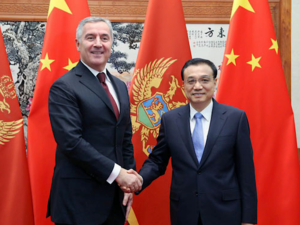
Perhaps we should prepare ourselves and learn to speak Mandarin. The writer Robert Payne spoke Mandarin but it was no help when he interviewed Mao Zedong over a dinner in Yenan in 1946. Mao only spoke Xiāng, a language used in the Hunan province where he’d been born and raised. He learned to speak Mandarin but always with a strong Xiāng accent. Payne’s interview was through interpretation provided by an American colonel who was also at the dinner. In the interview, Mao was critical of world powers that sided with the Red Army’s nationalist enemy, the Kuomintang, and his criticism was not unlike comments made more recently by Chinese officials. After all, Mao’s Red Army won; it’s the Chinese Communist Party (CCP) that is in charge. “There are people abroad who do not want or approve of democracy in this country,” Mao told Payne. “These people are acting with the consonance of the reactionaries in China. Let them know that whatever happens, even if we are faced with mechanised war, we shall win in the end.” If anyone is worried about the prospect of a Sino-American war, as suggested in Global Trends, they may find reassurance in Mao’s next comment to Payne: “On our side, we do not want war, and we look forward to a time when all democratic elements in all countries are united in a common aim for peace.” I wonder how the mercurial Mao would have got along with Xi Jinping? Believing, as he did, that “political power grows out of the barrel of a gun”, would he have accepted the idea that it could also come out of a cash machine?

China has internal problems of its own, which are cleverly dissected by Professor Min Ye iof Boston University in her book, ‘The Belt Road and Beyond’, which has been reviewed by Doctor Sebastien Goulard on the OBOR Europe website. “The starting point of Professor Min Ye’s analysis is that China’s governance is deeply fragmented among three blocks,” he writes: “(1) the senior national leaders, 2) the state agencies, and 3) the State Owned Companies (SOEs), private companies and local governments. According to Professor Min, senior leaders are implementing development strategies for social cohesion and nationalism, whilst local governments are motivated by economic growth. SOEs and private companies search for commercial opportunities.” Despite the repression of any political opposition or journalistic criticism, Xi’s China is not quite as united as he might like it to be and, given the nature of those power blocks, there’s not a lot that he can do about it.
Today, Mao Zedong’s maxim that “political power grows out of the barrel of a gun” can be set aside in favour of another of his sayings: “Politics is war without bloodshed while war is politics with bloodshed.” The Chinese Communist Party thus seeks, in effect, to ‘buy’ the world with soft loans containing hefty penalty clauses for late payment or default. As the poet T.S. Elliot wrote in his poem ‘The Hollow Men’: “This is the way the world ends / Not with a bang but with a whimper.” And a ‘payment overdue’ notice, one presumes.

